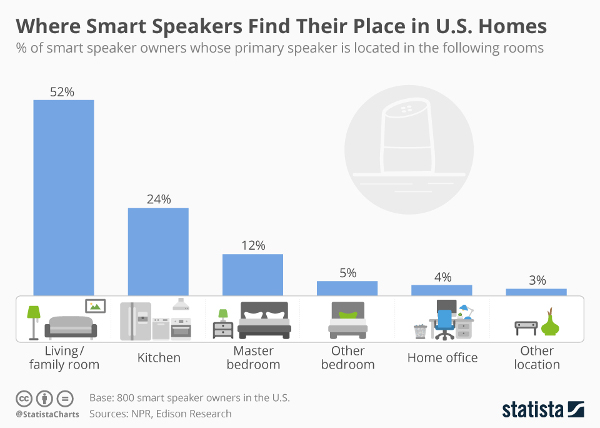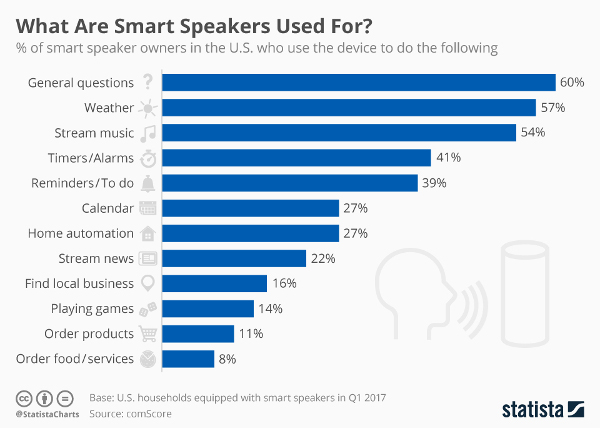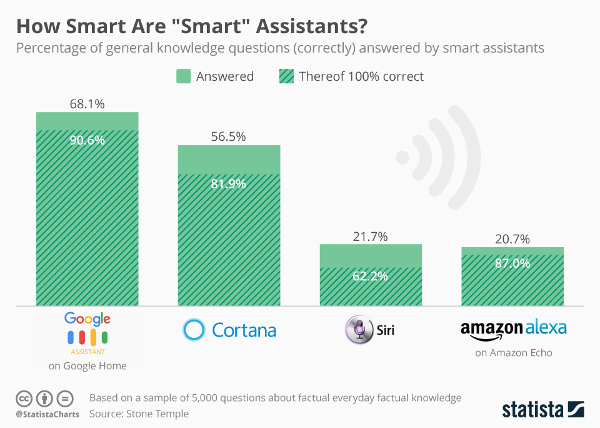Smart Speakers Right at Home as Category Sizzles

Turns out, that in a market that’s really starting to sizzle, more than half of these devices have established themselves at the heart of the American home — in the living room or family room — according to the recent Smart Audio Report from NPR and Edison Research. And as you can see from the chart below, the kitchen is also a fairly popular location, much more so than bedrooms and home offices.

When it comes to how today’s smart speaker owners are using these devices, as you can see from the comScore chart that follows, most people simply summon the built-in virtual assistant and ask basic questions, with weather ranking at the top. The next most popular task is using voice commands to stream music (they are, after all, speakers). Home automation gets a decent showing at 27 percent, while using a smart speaker to order products and services comes in dead last in terms of popularity at 11 and 8 percent, respectively — a finding Amazon is sure to find disappointing.

While many of the recent studies have yet to probe just how satisfied today’s smart speaker owners are with the answers they get from the likes of Alexa and Google Assistant, research conducted by Stone Temple reveals that "smart assistants" may not be quite as smart as you think. The company compiled a set of 5,000 questions about “everyday factual knowledge” to see how well four virtual assistants — Amazon’s Alexa, Google Assistant, Bing’s Cortana, and Apple’s Siri — would fare in answering them. As summarized in the chart below, Alexa and Siri were only able to answer about one in five of the questions, compared with 56 and 68 percent, respectively, for Cortana and Google Assistant. The percentage of correct answers is also shown for each assistant, which ranges from 62 percent for Siri to almost 91 percent for Google Assistant.

Regardless of where people decide to put their smart speakers and how they use them — a situation that will surely evolve over time — one thing is clear: the category will continue to experience unbridled growth. Gartner, a leader in technology research, predicts 75 percent of U.S. households will have a smart speaker by 2020. That’s a lot of speakers and the reason why we’re seeing a steady flow of new models heading to market, as highlighted in the chart below.
With its recently announced Home Mini and Home Max smart speakers Google is targeting both ends of the price spectrum, which finds Amazon’s Echo Dot at one end and Apple’s forthcoming HomePod at the other. It will be interesting to see how things develop in the coming months.

Related
- Log in or register to post comments





















































